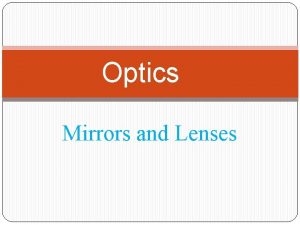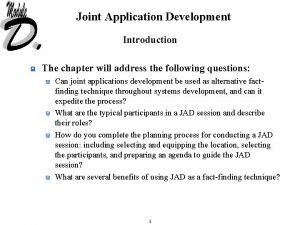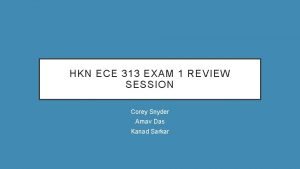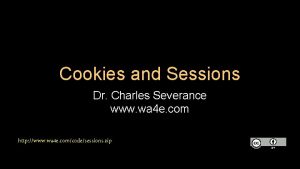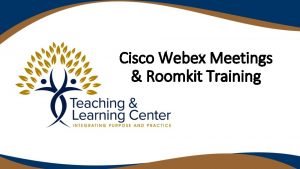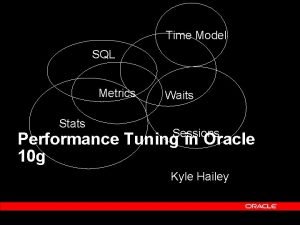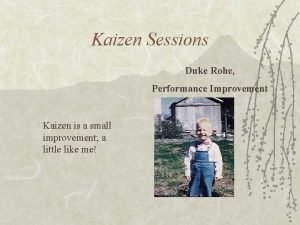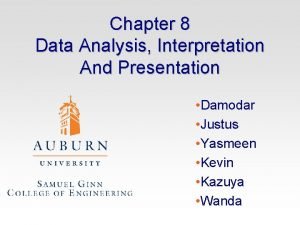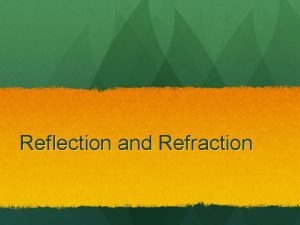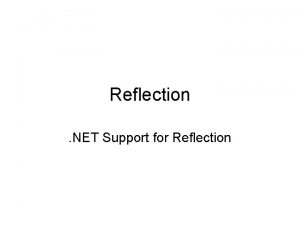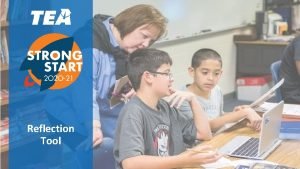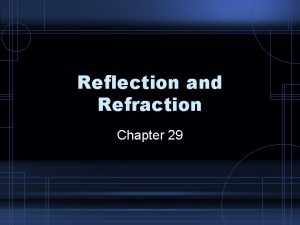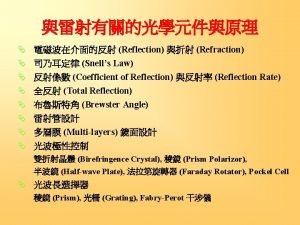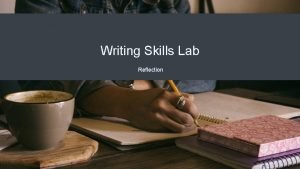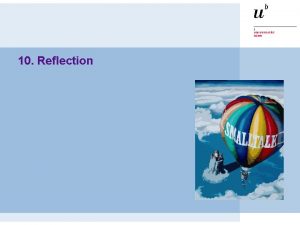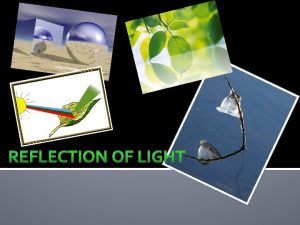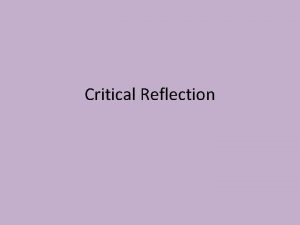Implementation of a scenario Scenario example Reflection sessions












- Slides: 12

Implementation of a scenario Scenario example: Reflection sessions By Geir Lieblein, Tor Arvid Breland Aage Steen Holm Norwegian University of Life Sciences (UMB) Norway Contact information: geir. lieblein@umb. no www. umb. no

Educational scenario: Reflection sessions • This scenario (educational activity) has been provided by the Norwegian University of Life Sciences (UMB). • The scenario description and learning resources can be found at: www. agroasis. org

Reflection sessions - background: Experiential learning from work on open-ended, real-life cases is a way for students to learn how to deal realistically with the complexity and unpredictability often encountered in agriculture and food systems. A case study is also an effective way to select, delimit and contextualize topics and theories, and it usually increases the motivation for learning. An essential component of experiential learning is reflection on experiences and actions in order to link these to relevant theory and to personal development. Systematic reflection on action represents a measure against falling into either of two ditches, blind action or empty theory. Such reflection is particularly needed in agro-ecosystems, where both bio-physical and human phenomena constitute essential and interlinked parts.

Reflection sessions: 5 basic steps (1/2) 1. Concrete experience with real-life cases (e. g. , at the farming or the food system levels) through field work or information acquired from a pre-made description. The students come in touch with real-life cases exhibiting complexity and thus creating needs for applying different perspectives and for reflecting on what is being dealt with as well on the processes of dealing with it. The cases may appear through concrete experiences from field work or from reading a description of a real-life, multi-faceted case. 2. Lectures readings and exercises relevant to understanding the cases The students are provided with information about the structure and functioning of the phenomena studied through selected lectures and readings within fields such as systems theory, ecology, agronomy, environmental science, economics and social sciences. The Organic. Edunet (http: //portal. organicedunet. eu) is a portal where you may find the information needed. Smaller exercises are used as pedagogic tools.

Reflection sessions: 5 basic steps (2/2) 3. Lectures, readings and exercises about the processes of reflection The students are provided with information about reflection as a means of understanding links between experience and theory and of understanding the ones own relationship to the phenomena dealt with and the process of dealing with them. The Organic. Edunet portal hosts much of the information needed. Smaller exercises are used as pedagogic tools. 4. Doing the exercises as a combination of individual work, group work and plenary class sessions The exercises of reflection encompasses individual work (e. g. reflecting on a specific question), pairwise or group exchange of ideas and discussion, and reporting and discussion of the outcomes in plenary class meetings. 5. Evaluation of and reflection on the scenario process A second-order reflection on the scenario process concludes the scenario.

Short exercise: How to implement the scenario “Reflection sessions”? (1/7) Step 1 Give readings about reflection to students. Learning resources provided in this scenario may be used. The readings can be stored in a local repository, handed out or found through web searches. Exercise: Search for literature on reflection sessions on the Organic. Edunet portal (http: //portal. organicedunet. eu) or Find the scenario “Reflection sessions with related resources by going to menu point “Educational scenarios” on the Organic. Edunet portal and click on scenario “Reflection Sessions”.

Short exercise: How to implement the scenario “Reflection sessions”? (2/7) Step 2 Prepare the topic to be reflected on, both content and process (What have we been dealing with, and how have we dealt with it? ). Give an oral introduction to the reflection session. Exercise: The process to be reflected on can be either an agronomic subject, the learning situation itself, an activity, a course, a presentation etc. You should think of a topic or activity in your learning practice which could be reflected on, both in terms of content and process.

Short exercise: How to implement the scenario “Reflection sessions”? (3/7) Step 3 Formulate and ask questions: Prepare at least one good question for content and process each, to enable the students to do a good reflection. Exercise: Find a guidepost for a reflection session, on which you can build your reflection session in regard to content and process. Use the same searching options as in Step 1.

Short exercise: How to implement the scenario “Reflection sessions”? (4/7) Step 4 In your own reflection session, let the students work 10 minutes individually with each of the questions. There should be NO talking during these minutes. Then have the students sit two and two to present their ideas to each other, for another 5 -10 minutes. Then let them sit in groups of four-five to share their thoughts, for 10 -15 minutes. Exercise: (No exercise for this step)

Short exercise: How to implement the scenario “Reflection sessions”? (5/7) Step 5 The group work should be documented on eg. flip-over sheets. A good idea is to take digital pictures of the sheets for later use. This could be uploaded to a local digital repository. Exercise: • Go to www. agroasis. org and click the link to the Community portal. • Find a folder called “Educational scenario: Reflection sessions”. Here you will find all kinds of learning resources and helping material for the scenario. Student’ work or all kind of outcomes could, as an example, be uploaded to such an area with a separate folder called “Student’s outcome”. If you have your own local repository, you could make a similar “space” for your learning resources and student’s outcome.

Short exercise: How to implement the scenario “Reflection sessions”? (6/7) Step 6 Let the students present the results in plenary; Plenary discussion on the different perspectives. Each presentation should have a duration of at least 15 minutes, including comments and discussion. Exercise: (No exercise for this step)

Short exercise: How to implement the scenario “Reflection sessions”? (7/7) Step 7 Let the students prepare a summary (individually or in groups) of the reflection session. This work could be used in the assessment: Oral exam, essay, presentation, written project document, learning document or presentation in class. Exercise: Think of examples of presentations or outcomes which could be useful for you as a teacher or students in the future. The outcomes from points 5 -7 could be uploaded in a digital repository.

